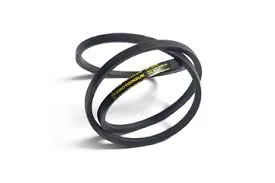- Arabic
- French
- Russian
- Spanish
- Portuguese
- Turkish
- Armenian
- English
- Albanian
- Amharic
- Azerbaijani
- Basque
- Belarusian
- Bengali
- Bosnian
- Bulgarian
- Catalan
- Cebuano
- Corsican
- Croatian
- Czech
- Danish
- Dutch
- Afrikaans
- Esperanto
- Estonian
- Finnish
- Frisian
- Galician
- Georgian
- German
- Greek
- Gujarati
- Haitian Creole
- hausa
- hawaiian
- Hebrew
- Hindi
- Miao
- Hungarian
- Icelandic
- igbo
- Indonesian
- irish
- Italian
- Japanese
- Javanese
- Kannada
- kazakh
- Khmer
- Rwandese
- Korean
- Kurdish
- Kyrgyz
- Lao
- Latin
- Latvian
- Lithuanian
- Luxembourgish
- Macedonian
- Malgashi
- Malay
- Malayalam
- Maltese
- Maori
- Marathi
- Mongolian
- Myanmar
- Nepali
- Norwegian
- Norwegian
- Occitan
- Pashto
- Persian
- Polish
- Punjabi
- Romanian
- Samoan
- Scottish Gaelic
- Serbian
- Sesotho
- Shona
- Sindhi
- Sinhala
- Slovak
- Slovenian
- Somali
- Sundanese
- Swahili
- Swedish
- Tagalog
- Tajik
- Tamil
- Tatar
- Telugu
- Thai
- Turkmen
- Ukrainian
- Urdu
- Uighur
- Uzbek
- Vietnamese
- Welsh
- Bantu
- Yiddish
- Yoruba
- Zulu
Abe . 11, 2024 03:18 Back to list
Understanding the Role and Function of Timing Belts in Engine Performance
The Function and Importance of Timing Belts in Engine Performance
The timing belt is a crucial component of an internal combustion engine, and its function directly impacts the overall performance and longevity of the vehicle. Its primary responsibility is to synchronize the rotation of the crankshaft and the camshaft(s), thereby ensuring that the engine's valves open and close at the proper times during the intake and exhaust strokes. This coordination is essential for maintaining efficient engine operation and performance.
The timing belt is usually made of a high-strength rubber material reinforced with fibers and is equipped with teeth on its inner surface. These teeth grip the gears of the crankshaft and camshaft, allowing for precise movement. Without a properly functioning timing belt, the engine could experience a range of issues, including poor performance, increased emissions, and catastrophic engine failure.
The Function and Importance of Timing Belts in Engine Performance
Timing belts typically have a lifespan of about 60,000 to 100,000 miles, depending on the make and model of the vehicle, as well as driving conditions. Regular maintenance and timely replacement of the timing belt are essential to avoid significant mechanical failures. Many vehicle manufacturers recommend replacing the timing belt as part of routine maintenance, often during the ten-year or 100,000-mile service interval.
timing belt function

In addition to synchronizing the crankshaft and camshaft, the timing belt may also drive other accessories, such as the water pump, oil pump, and sometimes even the alternator. This additional functionality can place extra stress on the belt, making it even more critical to monitor its condition regularly. A failing timing belt can lead to overheating issues if the water pump is not functioning correctly, adding another layer of complexity to engine maintenance.
It’s also worth noting that there are some vehicles equipped with timing chains instead of belts. Timing chains perform a similar function but are generally more durable and capable of lasting the lifetime of the engine. However, timing chains can stretch over time and may require inspection and, in some cases, replacement.
Modern automotive technology has brought advancements to timing belt designs, including the use of better materials that provide increased durability and resistance to wear. Some manufacturers are also incorporating features such as tensioners and guides that help maintain proper tension and alignment, further enhancing the effectiveness of the timing belt system.
In conclusion, the timing belt serves as a vital link in the engine’s performance chain. Its function in synchronizing the crankshaft and camshaft is critical for optimal engine operation. Regular maintenance and timely replacement are essential for vehicle reliability and performance. Neglecting the timing belt can lead to costly repairs and potential engine failure. Understanding the importance of this component and prioritizing its upkeep can result in a more efficient, dependable, and longer-lasting vehicle.
-
Korean Auto Parts Timing Belt 24312-37500 For Hyundai/Kia
NewsMar.07,2025
-
7PK2300 90916-T2024 RIBBED BELT POLY V BELT PK BELT
NewsMar.07,2025
-
Chinese Auto Belt Factory 310-2M-22 For BMW/Mercedes-Benz
NewsMar.07,2025
-
Chinese Auto Belt Factory 310-2M-22 For BMW/Mercedes-Benz
NewsMar.07,2025
-
90916-02660 PK Belt 6PK1680 For Toyota
NewsMar.07,2025
-
drive belt serpentine belt
NewsMar.07,2025

